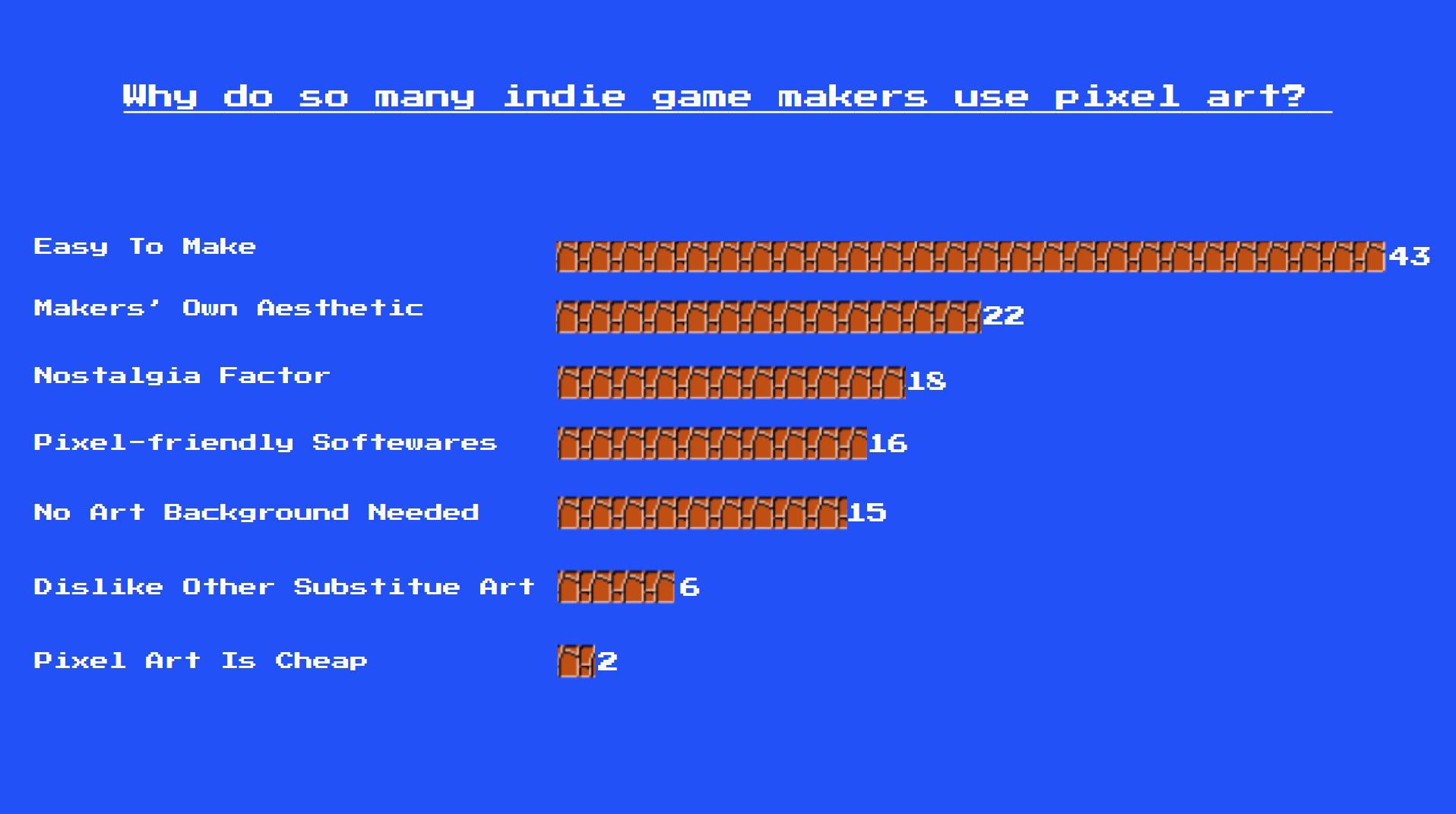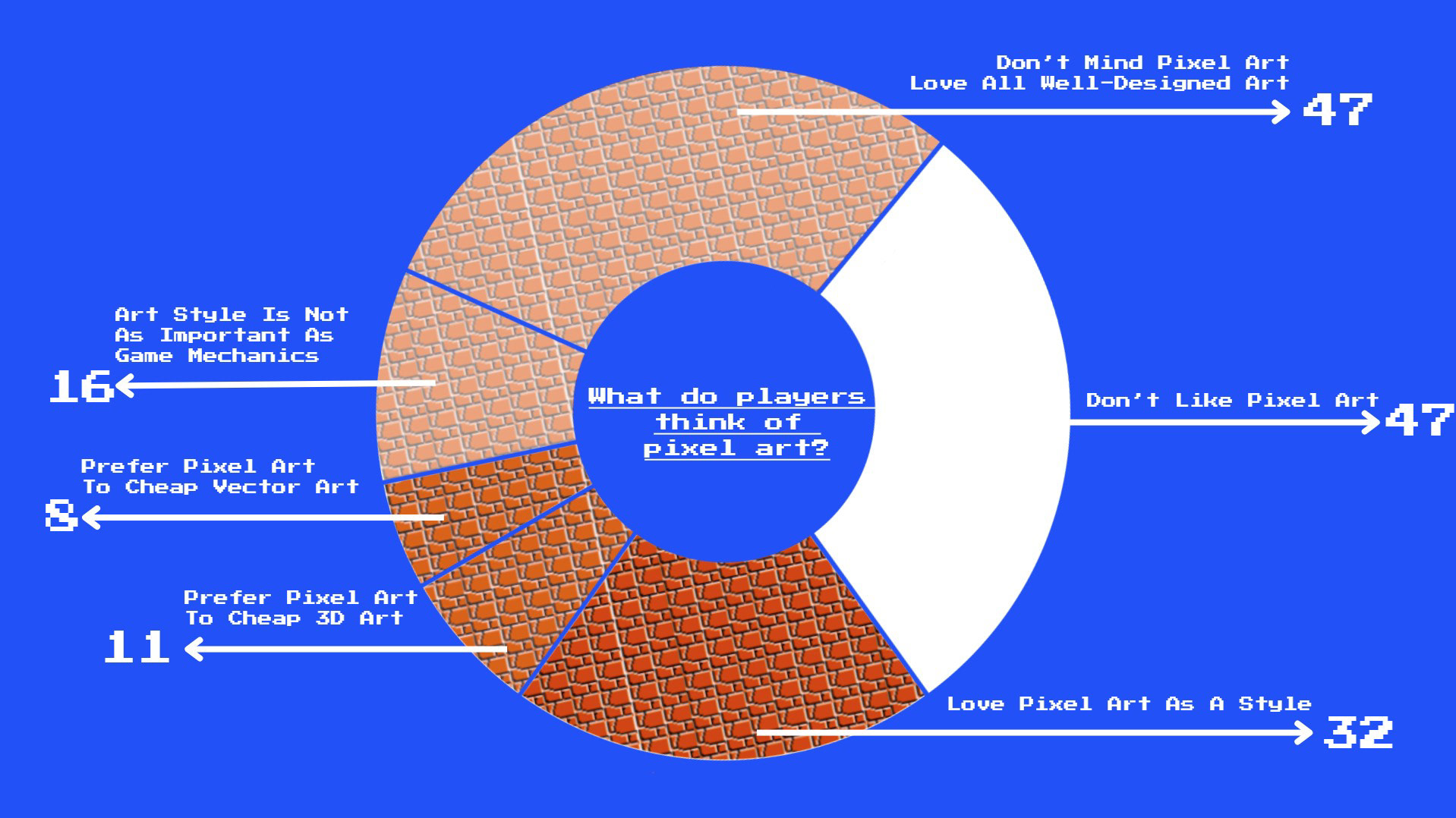The Art of Pixels: A Data Story about Game Aesthetics
As someone who grew up surrounded by all kinds of video games, I’ve always been drawn to their visual storytelling—how each game’s art style creates a mood, a world, or a memory. While I’ve come to appreciate Nintendo as a major force in shaping game aesthetics, my interest in this project goes beyond just one company. It’s about understanding how different visual styles—especially pixel art—have evolved, disappeared, and re-emerged across decades of game design. This data story brings together my passion for gaming, visual design, and storytelling through a personal lens that speaks to artists, players, and curious observers alike.
Animation: Telling the Story Through Motion
To bring this long-term trend to life, I created an animated visualization that shows the shifting popularity of art styles—Pixel, 2D, 2.5D, and 3D—over time. Watching the animation feels like watching game history unfold: a nostalgic rise of pixel games in the early years, the 3D boom, and then the quiet but powerful return of retro aesthetics in modern indie titles.
So, click play and see where is the pixel art going from 1985 to 2023...
Still Charts: Focused Visual Breakdowns
Alongside the animation, I designed a set of still charts that highlight specific aspects of the dataset—such as comparisons across decades, shifts within popular genres, and the role of third-party developers. Each chart focuses on a different angle of the story, offering a more detailed and structured way to explore the data.
Nintendo’s Visual Evolution
(Stacked bar chart showing art style trends in Nintendo-developed/published games from 1985-2023)
The main character of the whole story is pixel art—a style that began as a technical constraint but defined an entire generation of games. Nintendo, the platform that built its identity on pixel visuals, led this era with classics like Super Mario Bros. and The Legend of Zelda. But as consoles became more powerful, new visual forms—especially 3D art—rose to prominence. My first dataset tracks Nintendo-developed and -published games from 1985 to 2023 to explore how art styles have evolved over time.
The data reveals a clear shift: Pixel art dominated the early decades - Since the 2000s, 3D art has taken over - 2D and 2.5D styles remained relatively stable - Pixel art, once the star, became a background character
This raises a foundational question: Where is pixel art going—and what role does it still play today?
Pixel Art’s Position in the Broader Market
(Area chart showing art styles among top 50 Nintendo-platform games from 2014–2023)
To explore whether pixel art has simply been deprioritized by Nintendo—or whether it’s losing ground across the industry—I analyzed a second dataset: The top 50 Nintendo-platform games released each year from 2014 to 2023, regardless of developer. This dataset shifts the focus from Nintendo’s internal choices to the broader market performance of games on its platforms.
The data shows: 3D remains the dominant style across top-performing games - Pixel art nearly disappears in 2020, hitting its lowest point -But it makes a comeback in 2022 and 2023—largely through indie hits
This suggests that while pixel art may be underrepresented at the top level, it hasn’t disappeared. It’s finding a way back—outside of Nintendo’s own productions.


What Developers and Players Say About Pixel Art
(Bar chart (developer motivations) & donut chart (player opinions))
To understand the emotional and practical forces behind pixel art’s survival, I turned to a third dataset: Reddit discussions from 2023 and 2024, where both indie developers and players reflect on pixel art’s role in modern games.
From indie developers, I found that pixel art is: Easier to produce, especially for solo/small teams; Artistically fulfilling, aligning with personal aesthetics; Nostalgic, offering emotional resonance for both creators and audiences
Player opinions were more mixed: Many love pixel art, especially when it's well-designed; Some are neutral, caring more about gameplay than visuals; Others find pixel art cheap-looking or outdated
These insights help reframe the narrative: Pixel art isn’t obsolete—it’s just shifting homes.
No longer dominant in Nintendo’s first-party strategy, pixel art now thrives in indie spaces, driven by passion, practicality, and creative intent.
For Nintendo, this may signal an opportunity to reconnect with its visual legacy.
For indie developers—and for me—it’s a powerful reminder that pixel art still speaks.